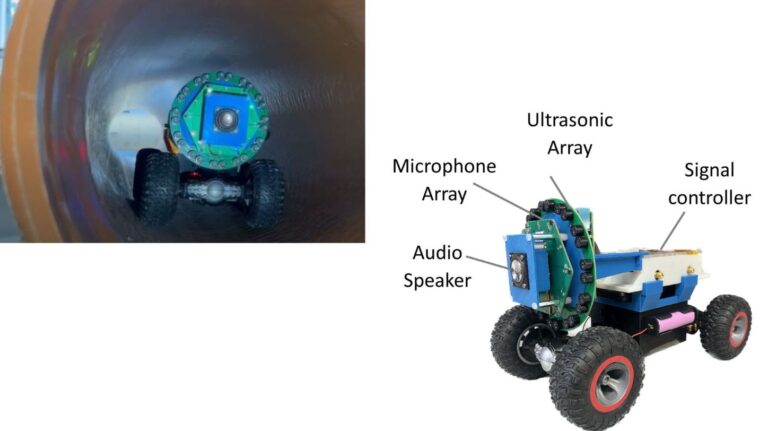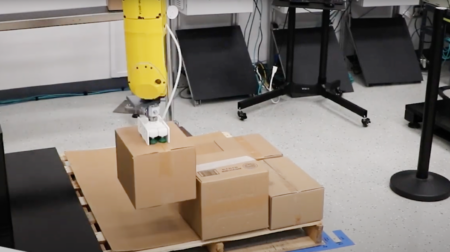A fleet of mobile robots have been used to inspect pipe structures using acoustic wave sensors as part of a project left by the University of Bristol.
Some three-metre long steel pipes containing multiple defects were used for the experiment, with the bots achieving 100% detection coverage, according to the research team.
The research was led by Professor Bruce Drinkwater and Professor Anthony Croxford, and published in NDT and E International.
Read more: Pipebots awarded funding for Thames Water innovation project
The experiment showed how a network of independent robots, each carrying sensors capable of both sending and receiving guided acoustic waves, can operate in ‘pulse-echo’ mode.
Pulse-echo mode is frequently used to inspect structures for engineering works.
The work is funded by the UK’s Engineering and Physical Sciences Research Council (EPSRC) as a part of the Pipebots project, with the team hoping for further research collaborations to demonstrate the technology’s viability for real-world pipe inspections.
Researchers explained that this method enables them to minimise communication between robots, means they require no synchronisation and enables the on-board processing to lower data transfer costs, thus reducing inspection expenses.
Dr Jie Zhang, lead author, said: “There are many robotic systems with integrated ultrasound sensors used for automated inspection of pipelines from their inside to allow the pipeline operator to perform required inspections without stopping the flow of product in the pipeline.
“However, available systems struggle to cope with varying pipe cross-sections or network complexity, inevitably leading to pipeline disruption during inspection. This makes them suitable for specific inspections of high value assets, such as oil and gas pipelines, but not generally applicable.”
The decrease in the cost of mobile robots in recent years has meant it is “increasingly possible to deploy multiple robots for a large area inspection”, Zhang added.
He explained that small inspection robots could form a starting point to explore how they can be used for generic monitoring of a structure for accurate defect detection and localisation that is low-cost and efficient.
He added: “We investigate this problem by considering a network of robots, each with a single omnidirectional guided acoustic wave transducer. This configuration is considered as it is arguably the simplest, with good potential for integration in a low-cost platform.”
The methods employed are applicable to related scenarios and could be used across other materials, pipe geometries, noise levels or guided wave modes. The team hopes this could allow for a broader range of sensor performance parameters, defects sizes and types and operating modalities to be explored.
The latest developments in robotics and automated technologies for materials handling will be on show at the Robotics and Automation Exhibition on 19-20 March 2024 at the NEC Birmingham. Register now to attend the UK’s biggest exhibition dedicated to robotics and automation, which is co-located with Britain’s biggest warehousing show, IntraLogisteX!









